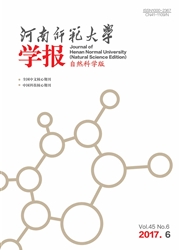

 中文摘要:
中文摘要:
采用Fenton试剂氧化法、NaCIO氧化法、KAI(SO4)2混凝沉淀法分别对新乡市某印染厂和某造纸厂的二级生化卅水进行深度处理.考察了废水初始pH,3种试剂投加量对废水COD和色度的影响.研究结果表明:室温下,反应时间30rain,3种方法对印染废水、造纸废水的深度处理均具有明显效果.Fenton试剂氧化法对两种废水的处理效果明显优于另外两种方法,其对印染废水深度处理的最适条件为:pH4,H2O20.8mg·L-1、FeS04150mg·L-1,COD、色度去除牢分别达到81.5%、75.0%,COD和色度分别从243mg·L-1、128降至45mg·L-1、32;其对造纸废水深度处理的最适条件为pH4,H2O20.6mL·L-1、FeSO4200mg·L-1,COD、色度去除率分别达到73.8%、75.0%,cOD和色度分别从351mg·L-1、128降至92mg·L-1、32.两种废水经过Fenton试剂氧化法处理后完全可以达到地方工业行业废水排放标准.
 英文摘要:
英文摘要:
The methods of Fenton reagent oxidation, NaC10 oxidation and KAI(SO4 )2 coagulating sedimentation were compared for advanced treatment of the effluents from the biochemical treatment system in a printing &. dyeing factory (PD) and a paper making (PM) plant respectively. Effects of the initial pH, the dosage of three reagents on the removal of COD and colority were studied. The results showed that the three chemical methods had obvious effects on the advanced treatment of the both wastewater at room temperature and 30 minutes reaction period. Among them, Fenton oxidation was significantly more effective in COD and color removal than the other chemical methods. Under the optimal condition of pH 4, H2O2 0.8 mL L 1 , FeS04 150 mg·L-1 , the COD and color removal rate of 81.5% and 75% were obtained permitting COD and colority reduction from 243 mg· L-1 to 45 mg· L1 and from 128 to 32, respectively for PD wastewater. Under the optimal condition of pH 4, H2()2 0.6 mL ·L-1 , FeSO4 200 mg L-1 , the COD and color removal rate reached 73.80/oo and 75.0% for PM wastewater re suhing in COD and colority reduction from 351 mg · L-1 to 92 mg ·L-1 and from 128 to 32 dilute, respectively. After treatment by Fenton oxidation, both the PD and PM wastewater could satisfy the local industrial wastewater discharging standards.
 同期刊论文项目
同期刊论文项目
 同项目期刊论文
同项目期刊论文
 Evolution of the microbial community in a full-scale printing and dyeing wastewater treatment system
Evolution of the microbial community in a full-scale printing and dyeing wastewater treatment system Influence of tetracycline exposure on the growth of wheat seedlings and the rhizosphere microbial co
Influence of tetracycline exposure on the growth of wheat seedlings and the rhizosphere microbial co Molecular diversity analysis of planctomycete-like bacteria in inosine fermentation and municipal wa
Molecular diversity analysis of planctomycete-like bacteria in inosine fermentation and municipal wa 期刊信息
期刊信息
